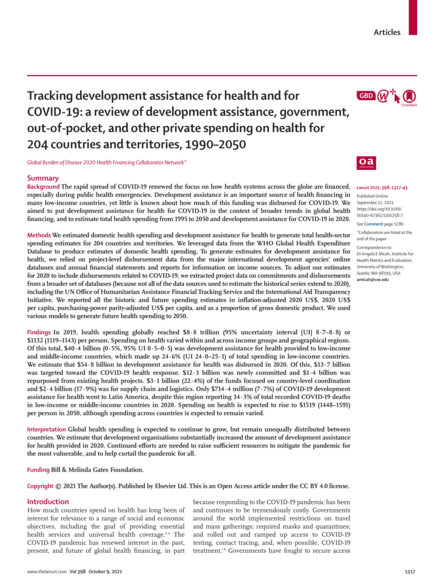Tracking development assistance for health and for COVID-19: a review of development assistance, government, out-of-pocket, and other private spending on health for 204 countries and territories
The rapid spread <span class="attribute-to-highlight medbox">of</span> COVID-19 renewed the focus on how <span class="attribute-to-highlight medbox">health</span> systems across the globe are financed,
especially during public <span class="attribute-to-highlight medbox">health</span> emergencies. Development assistance is an important source <span class="attribute-to-highlight medbox">of</span> <span class="attribute-to-highlight medbox">health</span> <span class="attribute-to-highlight medbox">financing</span> in
many low-income countries, yet little is known about how much <span class="attribute-to-highlight medbox">of</span> this funding was disbursed for COVID-19. We
aimed to put development assistance for <span class="attribute-to-highlight medbox">health</span> for COVID-19 in the context <span class="attribute-to-highlight medbox">of</span> broader trends in global <span class="attribute-to-highlight medbox">health</span>
<span class="attribute-to-highlight medbox">financing</span>, and to estimate total <span class="attribute-to-highlight medbox">health</span> spending from 1995 to 2050 and development assistance for COVID-19 in <span class="attribute-to-highlight medbox">2020</span>.


